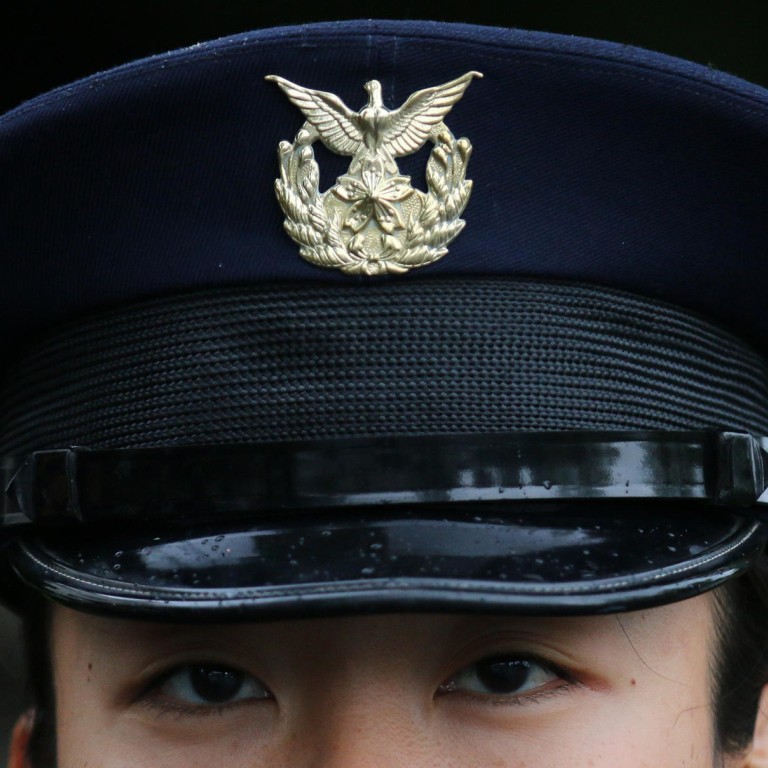
Japanese youth vie for military academy places as Shinzo Abe stiffens defence stance
Rise in would-be recruits to military academy as forces' profile rises
A 6am bugle call summons Mutsumi Iida to begin a day of study, sports and training, organised to the minute between until lights out at 10.30pm.

Iida is part of a boom in the number of would-be recruits for Japan's military, with enrolment at the academy hitting a 26-year high this year as Prime Minister Shinzo Abe pushes a more active defence posture.
"I want to work on a warship," Iida said at the seaside campus at Yokosuka, 70km south of Tokyo. "I want to be at the forefront of national defence. Japan is an island nation, so I think this is the way to get most deeply involved."
Hemmed in by the country's charter and lingering resentment over the second world war, Japan's Self-Defence Forces have not traditionally been a route to the top echelons of business or government.
But the defence forces' much-admired role in disaster relief after the 2011 tsunami and a deepening territorial dispute with China have fuelled pride and interest in the academy.
"In the US and Europe, members of the military are still ordinary members of society," said Ryosei Kokubun, a civilian China scholar who became president of the academy in 2012. "In Japan, they were not treated as such for many years."
Kokubun said military uniforms were such a rare sight on Japan's streets that students often changed into civilian dress when they left campus.
He said the prejudice was fading. The SDF boasted a more than 90 per cent approval rating in a government poll in 2012, compared with 67.5 per cent in 1991. The percentage of those seeking to join the armed forces "for the sake of the country" was about 30 per cent in 2012, compared with 12 per cent nine years earlier.
This year the academy's dormitories are crowded - 571 people took up spots, the most since 1978. The numbers of young people taking the entrance exam, which only one in 10 pass, have risen for two years.
Alongside the standard academic curriculum and an extra dose of security studies, students learn skills like how to dismantle and reassemble a gun, often marching in formation to class, briefcases in hand.
Meals take place in a vast mess hall seating 2,000, and when lectures are over, cadets attend sports clubs, including martial arts such as kendo, judo and sumo.
"I think you get a better education there than at an ordinary university," said Rear Admiral Umio Otsuka, who graduated in 1983. "You have no free time, so you can't slack off."
One member of the new intake of cadets expressed amazement at his new lifestyle and uncertainty about the future.
"It's way more brutal than I imagined," said Seiichi Warikata, 18, from Hokkaido. "Relations with surrounding countries are worsening and when I join the forces, it's not something I want to talk about, but if it comes to a war, will I actually be capable of sacrificing my life?"
